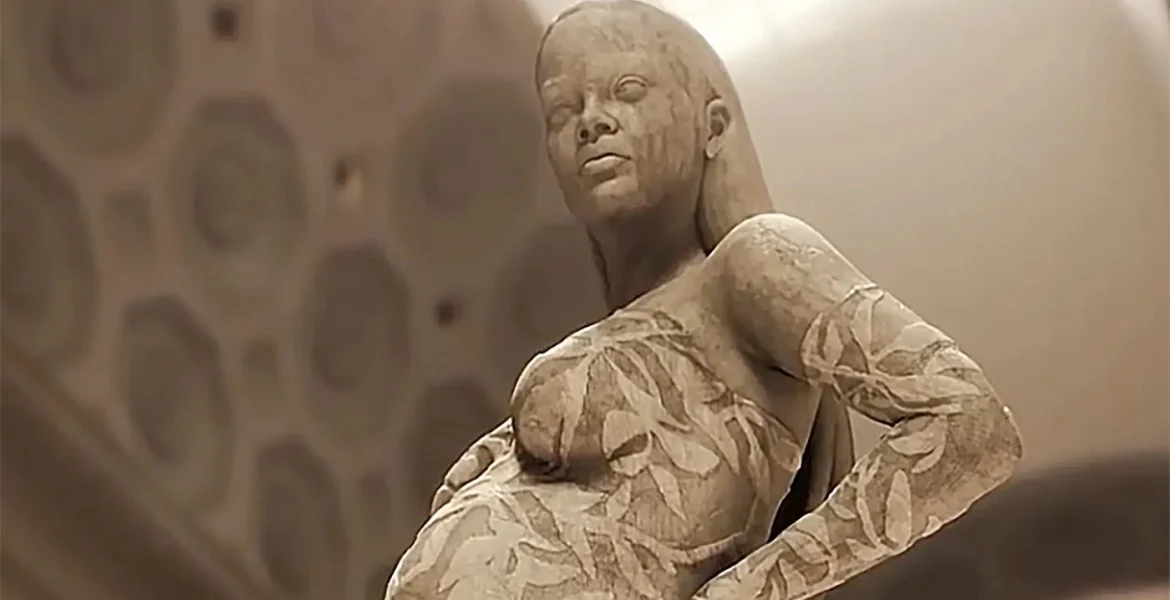Rihanna wasn’t physically present at the 2022 Met Gala, but her presence was felt.
Fans were looking out for a pregnant Rihanna at the Met Gala, but the stylish beauty mogul did not make an appearance. However, she was still honoured with a surprise from the Met Gala as the Met Museum dedicated a Greek Goddess Statue in her likeness.
The pop singer is in her third trimester and was recently on the front page of Vogue as she posed with her very pregnant stomach. The Met Museum recreated the front cover image of a pregnant Rihanna, fashioning her into the Goddess Eirene, who stands for peace.
Rihanna also reacted to the iconic set on her social media accounts.
“Shut down the met in marble! what’s more gilded than that? Lol! Thank you @metmuseum and @voguemagazine for this historic tribute! y’all bad for this one!” she wrote on Twitter.
According to Complex, the Met and Vogue magazine collaborated on the tribute to Rihanna to pay homage to the fashionable queen who is very close to her due date.
shut down the met in marble! what’s more gilded than that? Lol! Thank you @metmuseum and @voguemagazine for this historic tribute! y’all bad for this one! pic.twitter.com/NawYMd0RpL
— Rihanna (@rihanna) May 3, 2022
The original Vogue cover image of Rihanna had her wearing a tight-fitting red floral patterned Alaïa bodysuit, with matching gloves and shoes, as she addressed her fashion choices while pregnant as seeking to redefine pregnant women's fashion.
Rihanna also spoke about the next stage of her life, adding motherhood to an already busy life as she manages her billion-dollar beauty companies.
“Balance is one of my biggest challenges and always has been. And now there’s another human being coming into play, it changes what that means again,” RiRi told Vogue.
Still, Rihanna remains optimistic despite having a business empire and soon a newborn to take care of. She pointed out that his mother took care of three kids with nowhere near the resources she has at her disposal.
Rihanna's due date is not yet known, but she is believed to be around 8 months pregnant now.
Eirene – Greek Goddess of Peace and the Spring Season
Most of us know all about the Olympic gods and goddesses, or the twelve main Greek mythological deities who reside on Mount Olympus. While they make up the majority of all the stories about the gods and goddesses, there are also other deities, such as the Horae, who were the mythological goddesses who controlled the seasons and aspects of time. Eirene, (Irini, Ειρήνη) the goddess of peace and spring season, was one of the Horae. Here is more information about who Eirene was in Greek mythology:
Eirene Personified Peace
In Greek mythology, Eirene’s main function is that she was the personification of peace. Her role as the goddess of peace was so important, in fact, that the modern Greek word for peace is “Irini,” which is derived from the name of this goddess.
The Ancient Greek word for spring is also derived from the name, Eirene. Her physical appearance was also directly related to her status as the goddess of peace and of the spring.
She was always depicted as a beautiful young woman who carried various objects, such as a cornucopia, sceptre, and torch. She is often shown carrying an infant, Plutus, who became the Greek god of wealth when grown and was also associated with Demeter and Tyche.
Family of the Goddess Eirene
Although there is some debate as to who her parents were, she is sometimes described as being one of the daughters of Zeus, the king of the gods, and Themis, a Titan goddess.
She is said to have been part of the Horae, a group of sisters who were the goddesses of the seasons and the aspects of time that relate to the natural world. The Horae of Greek mythology was Eirene, the goddess of peace and of spring and her sisters, Eunomia, the goddess of the law and of the green pastures of spring, and Dike, the goddess of justice and order.
Important to the City-State of Athens
Although Athena was the patron goddess of the Ancient Greek city-state of Athens, other gods and goddesses were worshipped there, as well.
There is evidence that the goddess Eirene was one of those goddesses. She became important to the people of the city after the Athenians won a naval victory against the city-state of Sparta in 375 B.C.
After the victory, the people of Athens created alters throughout the city to honour her. They also put a bronze statue of Eirene in the Athenian Agora and held an annual ceremony in the city to honour her.
They did so to honour the goddess and thank her for the peace that resulted after they won that victory.
Eirene wasn’t considered to be a major goddess of Greek mythology, but she was still an important one. She was considered one of the Horae, who were a trio of goddesses who were said to represent the seasons. Eirene was the goddess of spring and also the personification of peace.


